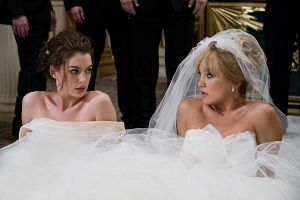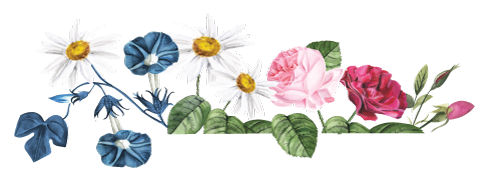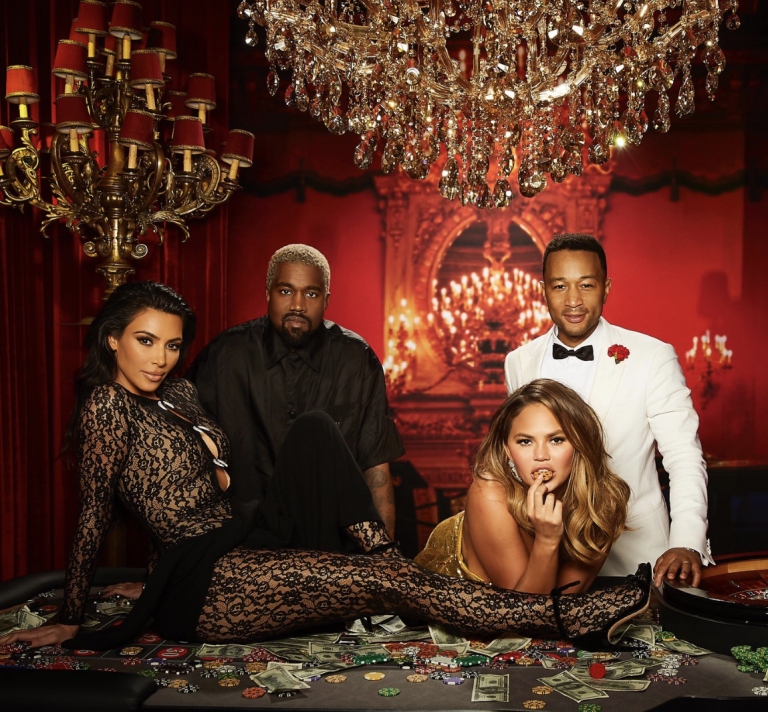
Social media changed everything when it comes to weddings. At first, Pinterest was revolutionary because it allowed couples the ability to easily search inspirational imagery, find planning hacks, and get D.I.Y. tips all in one place. But Instagram—with its treasure trove of content, often shared in real time by both regular people, celebrities, and brands alike—was truly a game changer for an industry that in many ways was previously very old school. Suddenly anyone’s wedding was up for public consumption, that is, if you knew how to search the right hashtag.
But what does all of this access to imagery mean? If you work in weddings, fashion, or decor, it’s both a blessing and a curse. Couples and clients are more informed than ever, but having all of these resources at one’s fingertips often results in trend fatigue at a lightening fast pace. An eighteen-foot naked wedding cake? Been there, done that. Donut walls? Seen ‘em and sick of ‘em! “It becomes tricky,” says interior designer and recent OTM bride, Ariel Okin. “You want to incorporate both novel and classic elements into your wedding, but you also don’t want it to feel too contrived or rip off someone else’s wedding photos entirely.”
Unsurprisingly, laid-back California bride and Moda Operandi communications director Hayley Bloomingdale has a very relaxed approach: “It’s not exactly plagiarism to have the same bouquet or speciality cocktail as another person!” she explains. “I don’t think there are that many truly unique wedding ideas out there, and if you’ve seen something at a friend’s wedding then it’s certainly ok to emulate—it just means you loved it when they did it.” Bloomingdale goes on to share that she recently went to a wedding where the welcome gift was simply a bottle of wine with a personalized noted. “I thought it was such a great departure from a welcome bag full of stuff you likely won’t use,” she adds. “We ended up doing something similar and welcomed our guests to their rooms with a bottle of California wine, English cheese (her husband hails from the U.K.), delicious crackers, and a personalized note—in my opinion, this was much more memorable than a tote bag filled with water bottles, a baseball cap with the wedding hashtag on it, and some Advil and Tums.”
Headaches and heartburn aside, it’s also just plain fun, and informative, to play voyeur and browse through other people’s pics. “From my perspective, I do it for a combination of aesthetics and mechanics,” explains celebrity planner Marcy Blum, who argues the social media platform can often come in handy. “I love to see how someone creatively fit 30 people under a chuppah or innovative table shapes or a different concept for food service.” But she also admits she’s had to deal with her fair share of couples who obsesses over creating “Instagrammable moments,” rather than paying attention to what is going to resonate with their guests on their wedding day.
In the lead up to her wedding, Okin wasn’t consumed with figuring out highly photographable moments, but does describe scouring Over The Moon and Vogue Weddings to pull photos. “The big Vogue Weddings coffee table book was a constant companion as was the Over The Moon Instagram account,” she says. “I took inspiration from things I saw everywhere: Pinterest, popular culture, Kate Middleton’s wedding dress, Audrey Hepburn’s bouquet in Funny Face, floral work by Lewis Miller, etc.”
But the internet can giveth and the internet can taketh away. Some claim copying is the highest form of flattery, others think it’s a code red offense and that the only suitable punishment is to publicly hold the perpetrator’s feet to the fire, à la @diet_prada, an Instagram account that calls out fashion industry copy cats. Illustrator Stephanie Fishwick also recently took a mainstream designer to task for closely replicating one of her collages on their dresses. Similarly, our favorite cashmere sweater brand Lingua Franca often names names on their IG Stories: citing big box stores like Banana Republic for stealing their look.
“There were a few Vogue.com and OTM weddings that I absolutely adored. I tried to incorporate aspects of them in my own wedding, but I always tried to put my own twist on each item,” Okin admits. “Of course, no one ‘owns’ a green and white color scheme with florals, for example, but I tried to choose specific flowers that really spoke to me. You don’t want anything to feel like you’re choosing it out of a catalogue—especially with a wedding, which is arguably the most personal and intimate moment of your life.”
Blum agrees wholeheartedly. “At this stage in my career, it’s no fun for me to just copy outright, so if a client comes to us with a Pinterest board or Instagram shots of someone else’s work and says this is exactly what I want, they aren’t a good fit for me,” she explains. “I would be lying however, if I said I never expound on other people’s work, because I absolutely do. For example, I recently saw David Stark do a giant pizza box with slices in it for people to use as a selfie-station, and I thought it was genius. I’m now thinking about other big props or backdrops we could use, but I would never just do a pizza.”
Having planned major parties, like Katie Lee Joel’s wedding on the Amalfi Coast, Blum has had her work copied more than a few times. “I always find it odd,” she admits. “I’m not highly offended because I’m sure I got the idea somewhere and don’t remember where. What does really make me crazy though is when people blatantly copy my verbiage or the way we go about producing a party that is in many ways quite unique.” And yet, Blum believes color combinations, wedding motifs, floral pieces, and the like, are, much like interior design trends, up for grabs. Although fair warning, you may end up featuring what turns out to be a cliché on your wedding day. “Remember the mason jar?” she asks. “I do . . . and not very fondly.”












